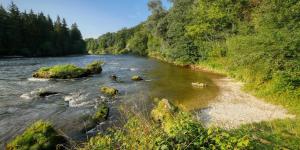Different Types of Deserts

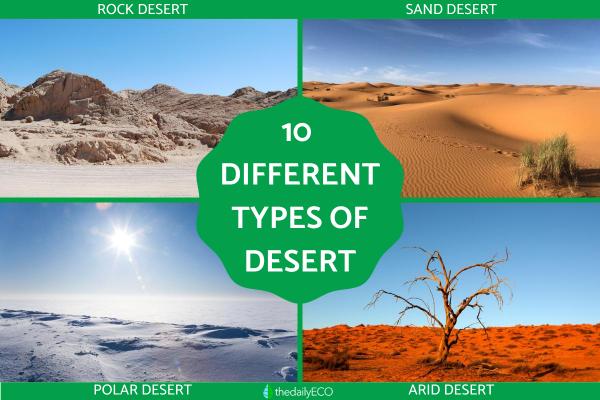
The different types of deserts include sand, rock, salt, polar, cold and many more. Some of us may not be aware there are so many different types of deserts. This is partly due to the often misunderstood definition of what is a desert. A desert is an ecosystem characterized by low rainfall and limited vegetation. This type of habitat is found in various regions of the world and presents a series of distinctive characteristics. Together they occupy a third of the entire land surface of our planet. Many of us only think of sandy deserts with camels being the only type of desert, but the true definition shows they are a much more diverse range of ecosystem.
In this thedailyECO article, we discover more about the different types of desert. We explain a little about the climate, plant and animal life and other characteristics of these deserts, as well as provide photos of what they look like.
- What is a desert?
- Rock deserts
- Sand deserts
- Polar deserts
- Hot deserts
- Coastal deserts
- Salt deserts
- Cold deserts
- Semi-arid deserts
- Arid deserts
- Hyper-arid deserts
What is a desert?
As we have already explained, the diversity of desert types is so great because the definition encompasses many different types of ecosystem. They all share certain characteristics which qualify them as a desert, although high temperatures are not one of them. They do tend to be very hot or very cold, so it is rare for any desert to experience mild temperatures.
Generally speaking, a desert is an area of land which has the following characteristics:
- Very low precipitation (less than 250 mm per year)
- Dry land
- Little flora and fauna
When we look at the different types of desert, we will see they all have these characteristics. The differences are found various factors including the temperature levels, type of terrain and other variations. We look at these types of desert with photos below.
Rock deserts
Rock deserts are composed mainly of rocks and rocky soil rather than sand. These rocks can vary in size and composition. They are often eroded by natural processes over time. The lack of vegetation cover in these deserts allows rocks to be easily visible and dominate the landscape.
These types of deserts are usually located in arid and dry regions with limited precipitation. The low water retention in the rocky soil makes it difficult for vegetation to grow, resulting in poor vegetation cover in these deserts.
The weather in rock deserts is often extreme. Daytime temperatures can be very high and night temperatures can be very low. Vegetation tends to be sparse and limited to areas where there is a greater accumulation of soil and available water. Some plants can find small holes or crevices in the rocks where they can grow and obtain nutrients. These plants are usually hardy and adapted to arid conditions and soil limitations.
Learn about one plant type which can thrive in desert areas with our article on types of spineless cactus.
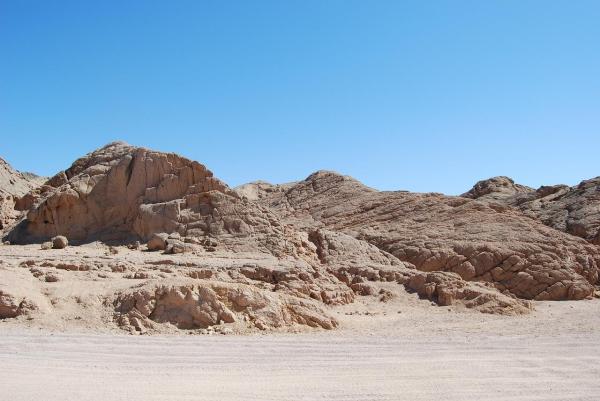
Sand deserts
Sand deserts are a specific type of desert that is characterized by having a large amount of sand on its terrain (as shown in the photo below). These deserts are found in various parts of the world and present a series of distinctive characteristics.
Sandy deserts are dominated by sand dunes. They are sand formations that accumulate and change constantly due to the prevailing winds in the region. They can reach impressive heights and take a variety of forms, such as sharp ridges or gentle undulations.
Sand deserts are usually located in arid regions where precipitation is low. The lack of rain contributes to the accumulation of sand, since water is an important factor in the process of erosion and transportation of sediments. The low humidity in these deserts also contributes to the formation and stability of sand dunes.
The climate in the sand deserts is characterized by extreme temperatures. During the day, temperatures can rise considerably due to intense solar radiation. At night, temperatures can drop rapidly due to the lack of clouds and low heat retention in the arena.
Discover one of the dangerous of high winds in sand deserts with our article on the causes of sandstorms.

Polar deserts
Although we often associated deserts with very hot climates, high temperatures are not a definitive characteristic of deserts. Polar deserts are are characterized by their extremely cold and dry climate, with very low temperatures and little precipitation in the form of snow. They can be found in the polar regions of the planet, i.e. near the North and South poles.
Precipitation in the polar deserts is limited and usually comes in the form of snow. Due to the low temperatures, the snow does not melt easily and accumulates on the ground. This creates a layer of ice that covers the surface which can be seen in the photo below. This makes it even more difficult for water absorption and limits the growth of vegetation.
What little vegetation that does exist is composed mainly of lichens and mosses. They are better adapted to low temperatures and lack of water than most other plants. In terms of fauna, some animals in polar deserts include polar bears and penguins. These animals are specially adapted for the cold and have thick layers of fat and fur to maintain body heat.
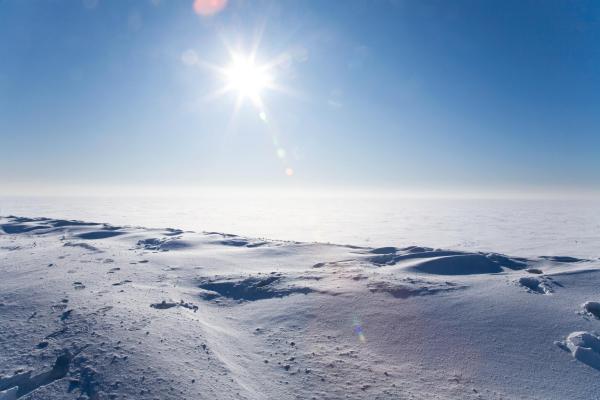
Hot deserts
One of the main characteristics of hot deserts is their high and rigorous temperatures. Hot deserts are those which include temperatures exceeding 40 ºC/104 ºF in some cases. Precipitation in hot deserts is scarce and occurs irregularly.
Vegetation in hot deserts is sparse and adapted to hot, arid conditions. The animals that inhabit hot deserts are usually resistant to high temperatures and lack of water.

Coastal deserts
They are found near coastal regions, one of which is shown in the photo below. In these areas, the interaction between the ocean and land creates a dry and arid environment. Ocean currents and coastal winds can bring in moisture from the ocean, but they can also cause increased evaporation and a cooling effect.
The climate of the coastal deserts is generally arid with little rainfall. The vegetation in the coastal deserts is varied, depending on both the availability of water and the intensity of the offshore winds. The presence of water in the form of nearby ponds, estuaries or rivers can attract a variety of species of birds and aquatic life.
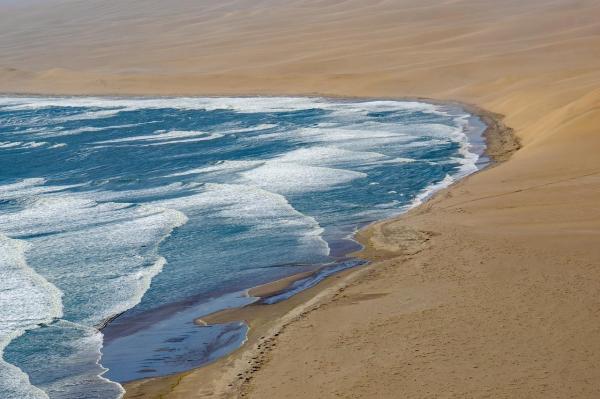
Salt deserts
Also known as salt pans or salt flats, these deserts stand out for the dominant presence of salt deposits on their surface. These deposits form when water evaporates, leaving behind salt minerals which build up over time.
Salt deserts are usually located in arid and dry regions where evaporation is high and precipitation is low. Lack of rain and high evaporation allow salt minerals to accumulate and crystallize on the soil surface.
The climate can be extremely dry and hot. Vegetation is sparse and few plants can survive in these extreme conditions. The animals that inhabit these deserts are usually resistant to the lack of water and high concentrations of salt.
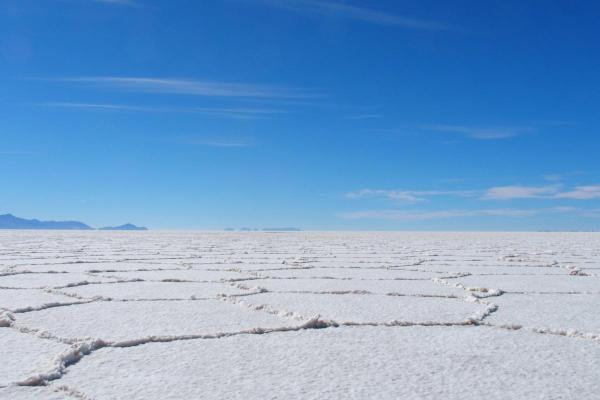
Cold deserts
These deserts are characterized by their extremely cold climate with low temperatures for much of the year. Most of the year, temperatures remain below freezing. In some cases, they can reach extremes of bitter cold. Precipitation in cold deserts is generally low, falling either in the form of snow or sleet.
Vegetation in cold deserts is sparse. It mainly consists of hardy plants adapted to cold and dry conditions. Fauna in cold deserts have also developed remarkable adaptations to survive in this harsh environment. Animals that inhabit cold deserts often have thick fur, dense plumage or layers of fat that protect them from extreme cold.
Discover more about very cold ecosystems with our article on the definition and examples of sea ice.
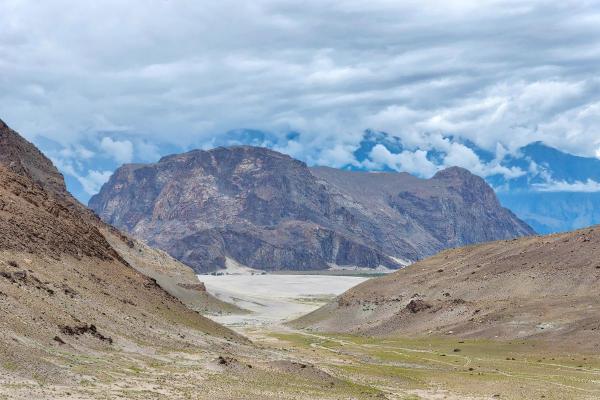
Semi-arid deserts
They are usually found on the edges of dry deserts, areas known as transition zones. They are not as scarce in terms of rainfall and heat as the previous different types of desert. An example of types of semi-arid desert is the Tabernas desert in Almería, Spain. It is considered the only true desert in Europe.

Arid deserts
These deserts receive an annual rainfall of less than 250 mm. The dryness of the climate in arid deserts is due to several factors, such as geographic location in areas of high atmospheric pressure, downwind that limits cloud formation and lack of sources of moisture. We have the Simpson desert located in Australia as an example of an arid desert.

Hyper-arid deserts
Hyper-arid deserts are characterized by their extreme aridity and dryness, presenting the most extreme conditions in terms of lack of precipitation and scarcity of water. They have arid and desolate landscapes, with extensive plains of sand, rocks and dry soil.
The lack of vegetation and the presence of sand dunes can give rise to impressive and changing landscapes. Sometimes areas of salt or mineral deposits can be found due to groundwater evaporation. The clearest example is the Atacama desert of South America with annual rainfall ranging from 0 mm to 16 mm.
The different types of deserts are only one of the many types of ecosystems we can find on our planet. Discover more about the interaction between environment and species with our article on the difference between biome and ecosystem.
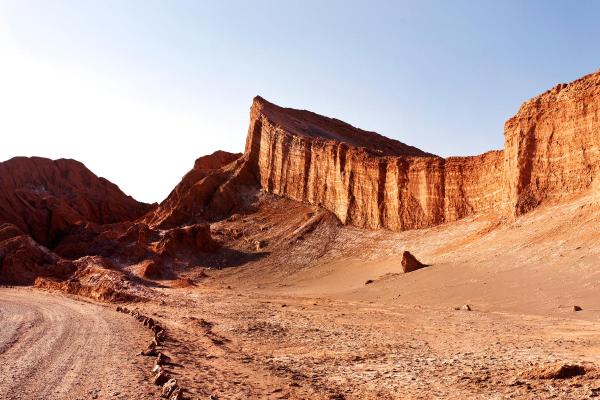
If you want to read similar articles to Different Types of Deserts, we recommend you visit our Ecosystems category.








